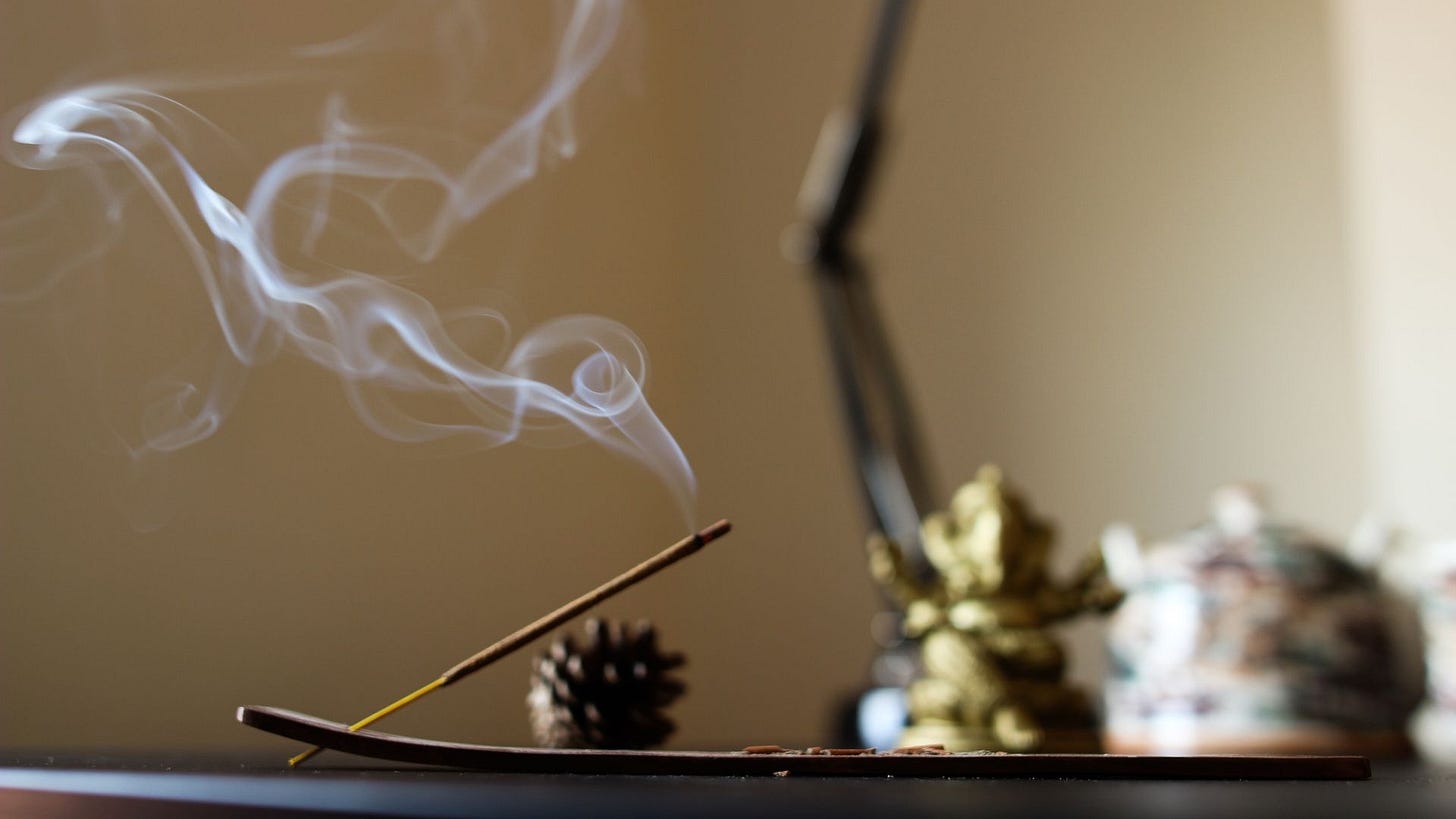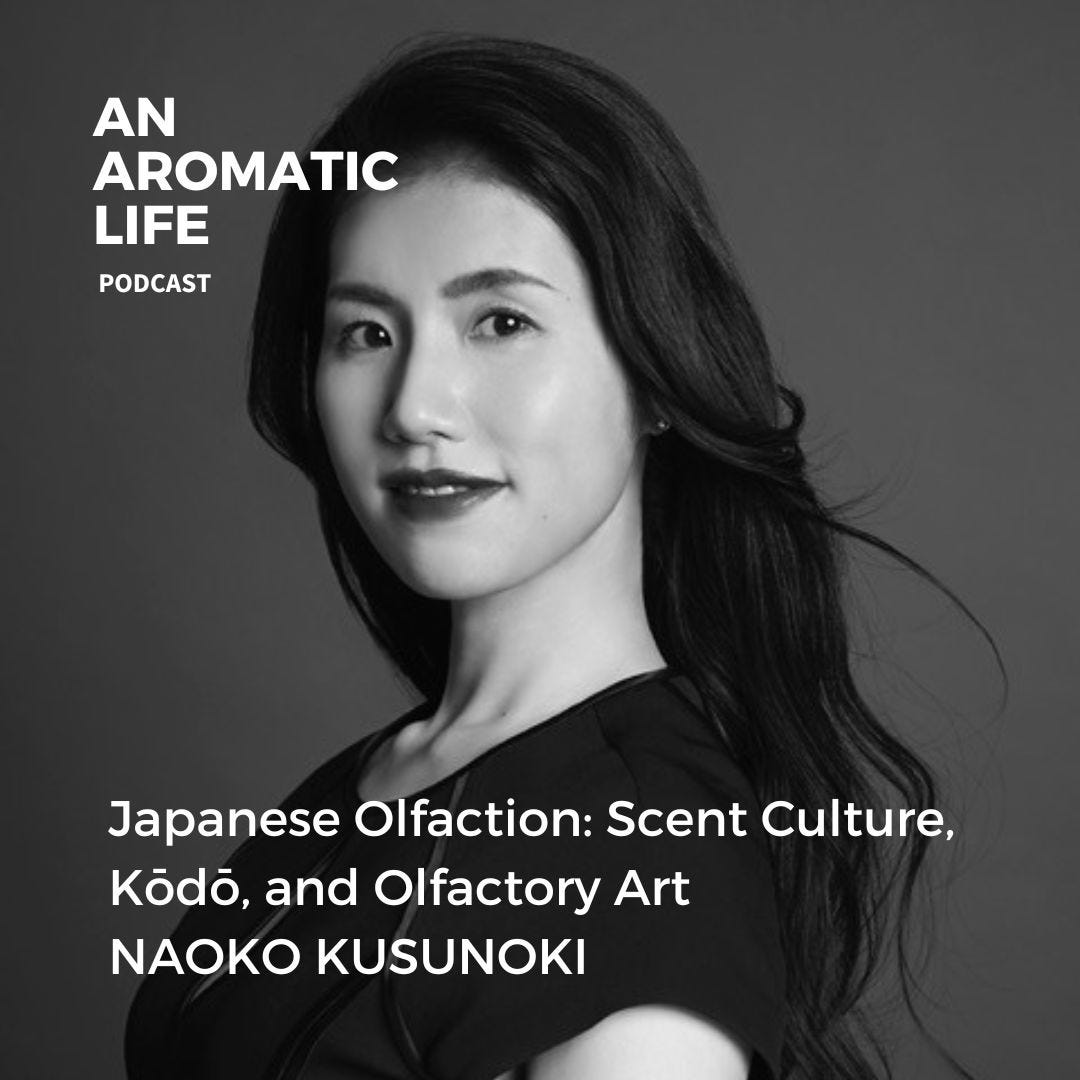The Scent of Stillness
What Japan & Her Incense Taught Me About Living Life.
I walked up to the jokoro just outside of the temple and placed my incense stick (osenkō) into the large cauldron filled with hundreds of others. It was a cold, cloudy December day and the rich, woody scent of the incense enveloped the crisp outdoor air.
My family and I had just spent the morning touring another part of Tokyo and we arrived at the Senso-ji temple a bit rushed. I was really looking forward to visiting this sacred place; it was going to be my first Japanese temple experience. Admittedly, I was a little intimidated because I wasn’t familiar with the ritual. So, I followed the lead of those around me and soon had the most magical experience.
It began with lighting the incense stick, which is done using an existing flame at the burner; everyone takes from the same flame. Then you gently wave the incense in the air, waiting patiently, until the flame slowly dies out.
I then proceeded to place my smoldering stick into the ash-filled cauldron, where it could burn with the others, creating a communal offering. I noticed some people pushing the scented air towards them, especially over their head and on their face. I learned later that this is believed to purify the body and mind, promote healing, and bring good fortune. There was a beauty in watching a group of us do this ritual together.
A jokoro outside of Senso-ji, the oldest temple in Tokyo. Sensō-ji is an ancient Buddhist temple in Asakusa, Tokyo, and the oldest-established temple in Tokyo, as well as one of its most significant. It is dedicated to Kannon, the bodhisattva of compassion.
To me it became clear that Japanese incense is more than a scent; it’s a gateway to a way of living - one that values presence, respect for all beings, and the interconnectedness of life.
Oh, to interrupt for a brief moment….
This week I have a wonderful conversation with perfumer and olfactory artist Naoko Kusunoki about Japanese olfaction on my podcast An Aromatic Life:
In the episode, Naoko shares her views on the current Japanese scent culture, including the preferred scent profiles, popular perfumes, and how the Japanese integrate scent into their everyday life. She also explains Kōdō (Koh-do), the incense ceremony and why listening to scent helps you appreciate incense. Naoko also explains what traditional materials are used in the ceremony, as well as the types of games that are played. Lastly, Naoko shares about her olfactory art projects, including the mind maps she prepares to illustrate her creative process.
It really is a beautiful conversation that will give you some olfactory insights on Japan.
You can listen to the episode, and many more, on Apple podcast, Spotify, Amazon Music, or wherever you get your podcasts.
I want to share five ideas that the Japanese people and their incense taught me, and how I now integrate them into my daily life using my nose:
Keep reading with a 7-day free trial
Subscribe to An Aromatic Life to keep reading this post and get 7 days of free access to the full post archives.



